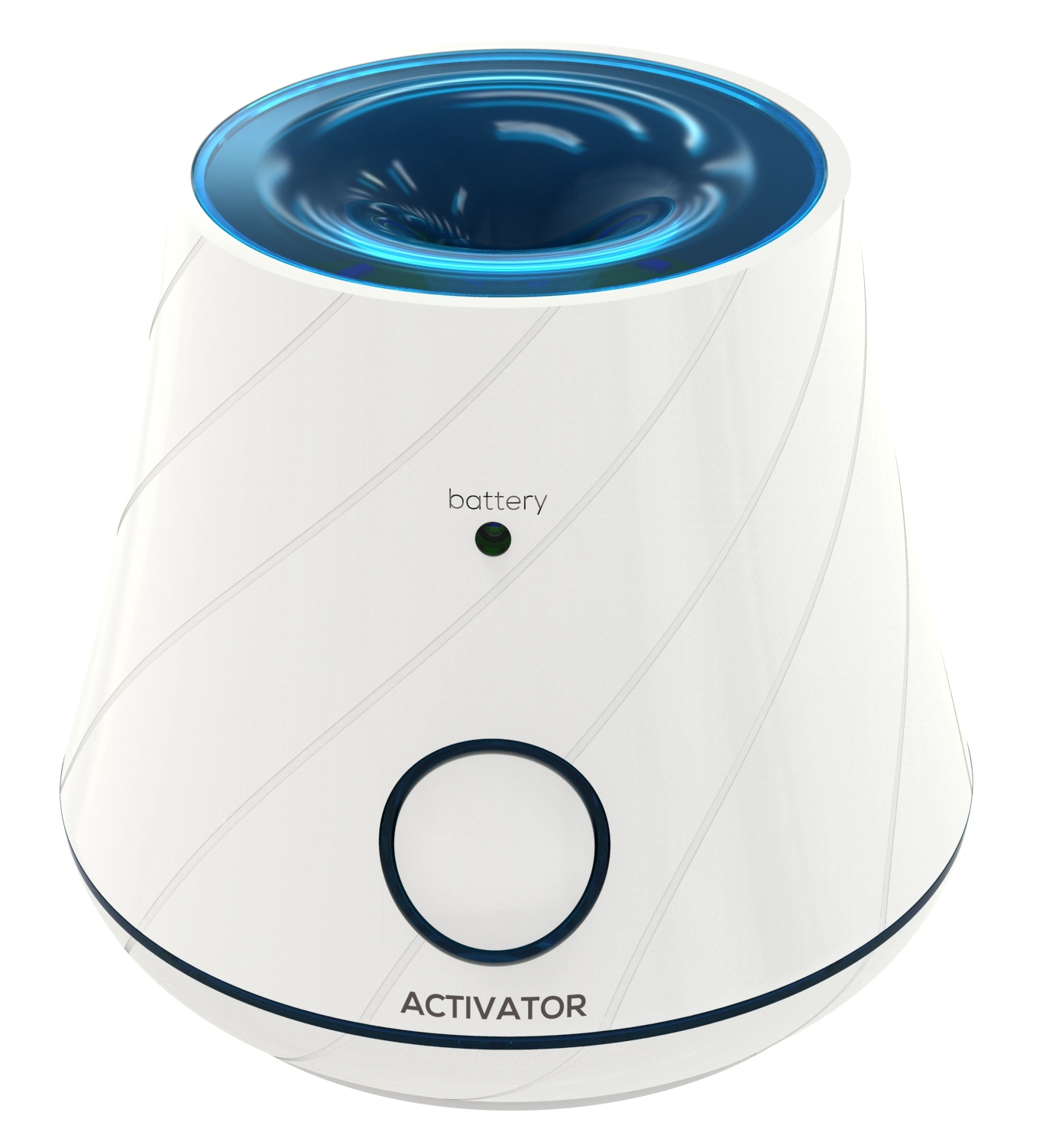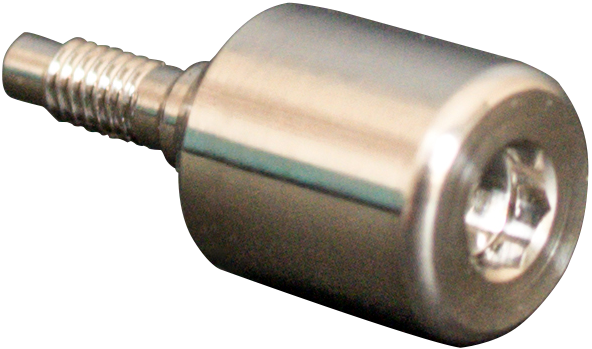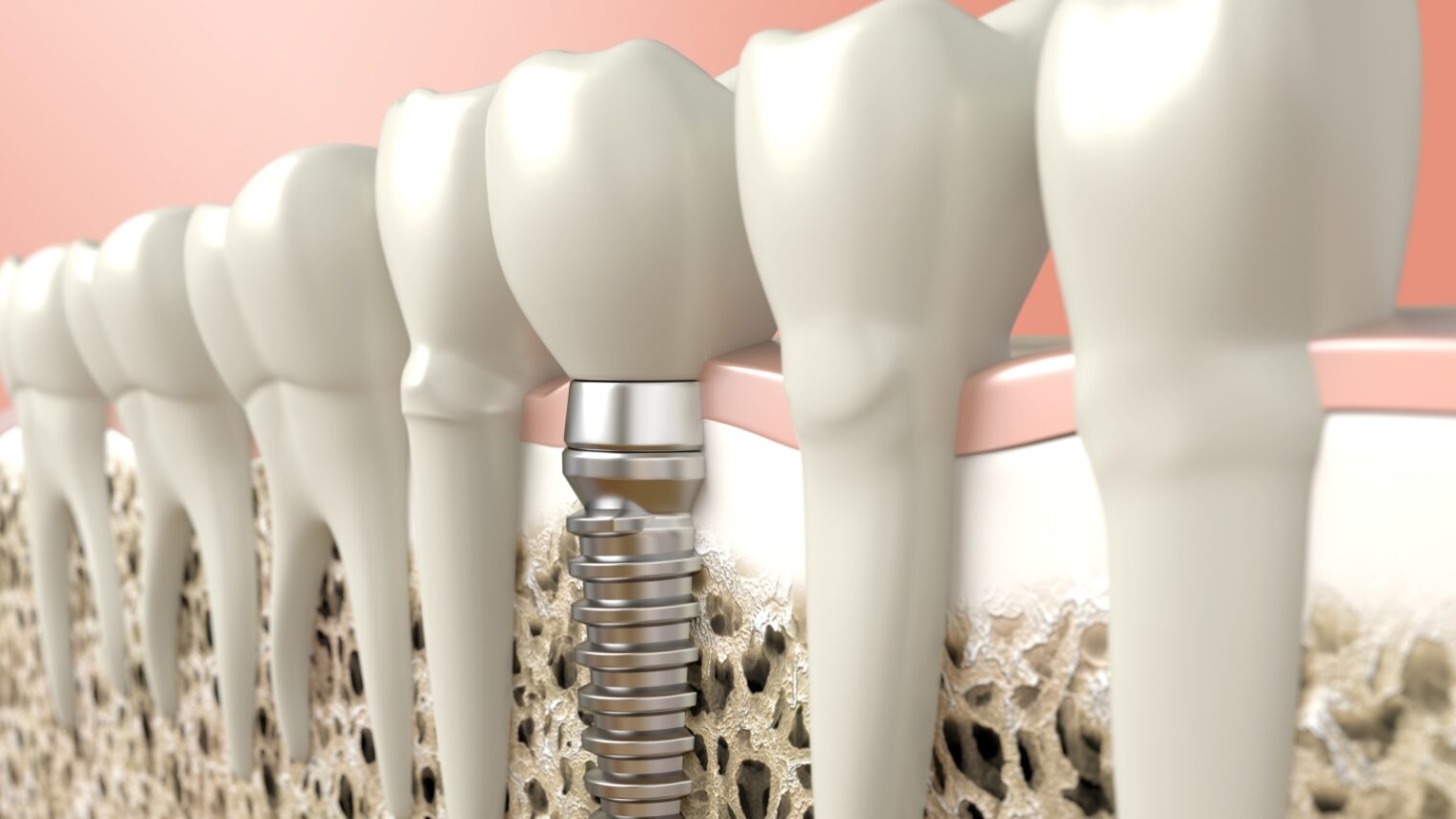In ancient Egypt, missing teeth were sometimes replaced with carved seashells or pebbles anchored in the jawbone. Modern implant dentistry is a lot more sophisticated, but the basic idea is the same: placing an artificial root into the jawbone to hold a replacement tooth (crown).
The two-part procedure begins with screwing a titanium “root” into the jawbone and waiting three to six months until the bone grows firmly around it – called “osseointegration.” A healing abutment, or cap, is placed on top of the implant to help the gum heal, and then it’s replaced with a regular cap in which the crown is connected to the implant.
The Israeli company Magdent says its revolutionary MED (miniaturized electronic device) built into the healing abutment makes the bone grow three times faster by transmitting an electromagnetic field into the implant and the surrounding bone graft.
Electromagnetic fields have long been used by orthopedists to heal complicated bone fractures because they encourage the creation of bone-building cells.
Scaling the technology down to size for dental use, Magdent also proved in animal studies that MED causes the bone to grow more densely than usual. This is significant for the many people who are risky dental implant candidates because of poor bone quality.
Newly on the market in Europe, and patented in the United States and Europe, MED is being mass-produced in Tiberias and will be submitted for US Food and Drug Administration (FDA) approval next year.
Meanwhile, Magdent Chief Operating Officer Elad Yakobson is traveling the world in response to inquiries from dental manufacturers and distributors in Europe, North and South America and Asia.
Strong interest in the Israeli product is understandable. According to the American Academy of Implant Dentistry, the estimated US and European market for dental implants is expected to reach $4.2 billion by 2022. Yet innovations in implant dentistry have not kept up with the pace.
“All dental implants are titanium screws, and many companies have tried to accelerate osseointegration by changing the shape of the screw, but the differences are minor,” Yakobson tells ISRAEL21c.
“Ours is the first innovation that lets the doctor actively influence the healing process. The MED creates an electromagnetic stimulation from microelectronics inside the healing abutment. The doctor uses the same treatment protocols; there’s no learning curve.”
The practitioner pays $70 per unit, plus one-time purchase of an activator device that switches on the microelectronics inside the abutment.

May also prevent infections
In addition to shortening the osseointegration process by two-thirds and improving the quality of the bone by about 40 percent, MED may prove helpful in preventing or treating peri-implantitis, an infection that can occur around the dental implant even a few years after the procedure.
“Electromagnetic stimulation helps kill bacteria, so we are investigating how it might help treat peri-implantitis,” says Yakobson. “Currently, there isn’t really a cure. The dentist has to open the gum and treat the infection with antibiotics.”
Magdent is conducting advanced clinical studies in several countries, he tells ISRAEL21c.
The company was founded in 2011 by oral maxillofacial surgeon and attorney Dr. Shlomo Barak, who also founded Israel’s Maccabident chain of dental clinics and headed the Mouth and Jaw Institute at Hillel Yaffe Medical Center in Hadera.
In the late 1980s, a patient came to Barak with a jaw fracture. Radiation treatment for cancer had made her jawbone brittle and unable to hold the screws and plates normally used in jaw-repair surgery.
Barak recalled hearing a lecture about using electromagnetic stimulation in orthopedics, and he contacted the manufacturer of the large machines used in this type of therapy. Sure enough, a nine-month course of treatment cured the patient and Barak published a paper in The International Journal of Oral & Maxillofacial Surgery about his unusual application of the concept.
“Dr. Barak knew that Israel is good at miniaturizing things, so he got the idea that this could be a good solution for implants,” says Yakobson.
He started the company in the Trendlines medical technology incubator with a modest grant from the Office of the Chief Scientist, finishing the incubator phase in 2014. The company recently raised another $800,000 for further development, marketing and sales, bringing its total financing to $1.9 million.

One immediate goal is making the MED even smaller, as currently it can be used only to replace rear (molar) teeth.
“We are in the final stages of developing a smaller version of our product and we are now starting R&D in the application of our technology in orthopedics as well,” says Yakobson.
For more information, click here.













